
America’s plurality voting system limits voter’s options. With one man and one vote, the man or woman with the most votes wins an election, regardless of whether they receive a majority. In such an environment, voters tend to vote tactically. That is, they lean heavily in one direction or the other. There’s no middle ground.
The religious right’s well aware of this democratic flaw. Taking advantage of changing political tides, these “value voters” used tactical voting to elevate the GOP to heavenly heights – with hellish results.
The mid-seventies seemed relatively quiet on the Culture War front. States slowly eased on sodomy laws, gays were making moderate social headway and politicians were adopting more gay friendly policies.
The Gay Liberation Front and The Gay Activist Alliance were in shambles, but in 1973, a new organization filled the gay rights gap: the National Gay and Lesbian Task Force. The previous five years of the movement largely revolved around politically motivated shock value. Yes, the GAA worked toward political ends – and with limited success – but the Task Force delved deep into America’s political landscape. They did not, however, get to the root of America’s religious right.
Barbara Giddings, Howard Brown, Bruce Voeller and the Task Force’s other founding members were determined to succeed where other groups failed: put gay politics on the federal radar. And they did. Within two years of coming together, the Task Force and its allies successfully lobbied the U.S. Civil Service Commission to accept openly gay employees. They also persuaded the National Council of Churches to decry anti-gay discrimination. Aiming to claim a stake to America’s political power, the Task Force also stood up for Democratic leaders, endorsing candidates who spoke for gay rights. One candidate in particular, Jimmy Carter, became president. Taking advantage of a golden opportunity, the Task Force arranged a historic White House meeting with the Democratic President.
How about we take this to the next level?
Our newsletter is like a refreshing cocktail (or mocktail) of LGBTQ+ entertainment and pop culture, served up with a side of eye-candy.
By this point, 1977, the Democrats had already incorporated gay voters, whose rights were included under broader civil rights. In 1972, four years after Stonewall, two gay speakers – Madeline Davis and Jim Foster – appeared at the party’s 1972 national convention. George McGovern and Jimmy Carter courted gay voters in their respective presidential campaigns. McGovern lost to Nixon, but Carter proved victorious in 1976 and held the aforementioned meeting soon after his 1977 inauguration. The gays had made it to the White House: an arrival that irked conservative Republicans and, more importantly, the Evangelical fundamentalists.
Pragmatically speaking, values voters had two choices: Democrats or Republicans. None of America’s multiple political parties stood a chance at taking over the government. And, thanks to our plurality voting system, they could only cast one vote. For Evangelicals, the answer came easily. The Republicans seemed the most traditional and many believed it could provide stability in trying times. Fred M Shelley et al. write in “The Civil Rights Movement and Recent Electoral Realignment in the South”:
As the national Democratic Party became increasingly identified with support for civil rights, some prominent white southern politicians reassessed their commitment to the Democratic party… Meanwhile, between the 1950s and the 1970s the Republicans had become identified with conservatism.
The legalization of abortion, abolition of miscegenation marital laws and the exorcism of school sanctioned prayer signaled broader changes in the American spirit. And not many were feeling it.
As the GLF and GAA fertilized the Task Force’s growth, so too did Billy Graham plant the seeds for the Christian Right’s rise. Graham’s largely apolitical position in the 1950s and early 1960s didn’t sit well with the Evangelical’s new generation, a population Graham helped create. As we’ve established, America had undergone tremendous changes. One change more than any other may have spurred the Right’s ascension more than any other: the television.
With the dispersion of televisual technology, the likes of Jerry Falwell and Pat Robertson could be piped into millions of homes at a time, feeding their fans “salvation” and political propaganda in one tidy, convenient package. Robertson’s television crusade began in 1960, when he founded his Christian Broadcasting Network, which would grew into a mammoth media powerhouse. From CBN’s website:
Founded on January 11, 1960, CBN first went on the air on October 1, 1961, on WYAH-TV (from Yahweh, the Hebrew name for God), a UHF television station with barely enough power to reach across the Portsmouth city limits.
…
Today CBN is a multifaceted nonprofit organization that provides programming by cable, broadcast and satellite to approximately 200 countries, with a 24-hour telephone prayer line.
Though Robertson started small, his message and charm earned him an exponential amount of followers.
At the same time, Reverend Jerry Falwell, who founded his first church at the tender age of 22, influenced thousands through his Old Time Gospel Hour. His congregation, Thomas Road Baptist Church, grew steadily and soon Falwell had amassed enough money and power to establish Lynchburg, Virginia’s Liberty University.
These men – along with the Heritage Foundation – helped bring the Evangelical movement to the forefront of American politics. A. James Reichley writes:
[In the late 1970s] a new wave of television evangelists, including Jerry Falwell and Pat Robertson, helped guide evangelical laity toward increased political activity on the conservative and Republican side… In the late 1970s, right-wing political conservatives like Paul Weyrich and Howard Phillips spotted white evangelicals as the “sleeping giant” of American politics.
In 1979, that sleeping giant found a leader in Jerry Falwell, who Weyrich tapped to lead the Moral Majority: a Christian coalition that would steer American politics down the road to self-serving “righteousness”. As Falwell reined in the right, a Minnesota-based gay man named Steve Endean began planning his own political lobbying group.
Born in Iowa and raised in the isolated Midwest, Endean had little exposure to gay people. No dummy, Endean recognized – and attempted to repress – his homosexuality. During his years at University of Minnesota, 1968-1972, Endean caught the activist and started dabbling in political action. Though growing into an outspoken young man, Endean refused to come out.
His faggotry, he feared, would destroy his nascent political career. The times changed, however, and Endean finally came out. And, doing his duty, came out for gay politics. In 1971 he founded Minnesota’s Gay Rights Legislative Committee, which would lobby for pro-gay policies. Endean’s interest in gay politics mushroomed, as did national activism. It wasn’t long until Endean crossed paths with the Task Force, which further spurred his national political passion.
The activist – who has more than once been referred to as a “genius” – and his national politics took a new direction in 1980, when he moved to Washington DC to establish the Gay Rights National Lobby. Perhaps more moderate than the Task Force, GRNL backed gay candidates, raised money and continued to lobby for gay rights. The GRNL also spawned another group of homo-lobbyists, the Human Rights Foundation, which Endean would lead for its first three years.
By 1980, thousands of gay Americans aligned with similar groups, primarily the Task Force. Millions, meanwhile, saddled up to the Christian right and the combined efforts gay activists couldn’t stop them. The Moral Majority and other advocacy groups fought for America’s soul. Unlike gay groups, which were still fighting social stigma, the Christian right had a built in constituency. Trusting their demigod leaders, America’s Evangelicals turned toward to the dark side, convinced their moral values would guide America down the right path, so to speak.
Once a darling of his Evangelical peers, Carter soon fell from their good graces. Goaded by Falwell and his ilk, religious voters turned to a former actor named Ronald Reagan, who won the 1980 election. Actually “won” may not be the correct word. “Dominated” fits better, we think. From A James Reichley’s “Faith In Politics”:
After supporting their fellow evangelical Jimmy Carter in 1976, white evangelicals, now comprising more than 20 percent of the national electorate, voted by a two-to-one margin for the conservative Republican candidate, Ronald Reagan.
Reagan’s presidency proved disastrous for America. What did people expect from a B-list actor who made the A-list by feeding conservative America’s unilateral ideology? The man’s public distaste for gays dwarfed compared to his hateful silence. As AIDS ravaged gay communities – and spread to straight, too – Reagan remained mum. It wouldn’t be until 1987 that he’d say “AIDS”. By then, of course, it was too late.
The Republican power began to crumble in the mid-1980s. Growing more political adept and gaining more influence, gays would help guide America in a new direction. There would, however, be casualties.
(Sorry this week’s installment’s a day late. We’re making up for it by posting another chapter tomorrow.)


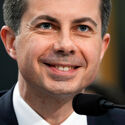
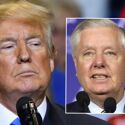



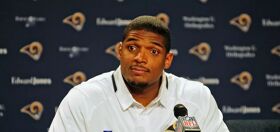

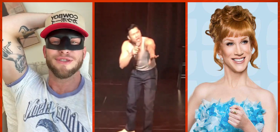

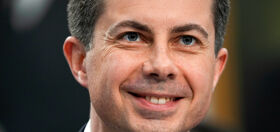


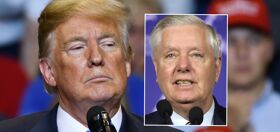



WWH
I hope David pays you extra to write these term papers!
Tallskin
Interesting gay perspective on US history, many things I didn’t know, being but a poor benighted Yerpean.
As for the Reagan thing: We’re getting the idea over here that he’s viewed as a hero now. (I hated him at the time). But then we’re having the same thing here with Mrs Thatcher.
Hate the evil bitch Thatcher though I might, still I have to admit that her policies arrested the precipitous decline of the UK economy and has made the UK the currently the 4th largest economy in the world. I guess the same thing applies to Reagan, he stopped US economic decline, defeated the soviet union, blah blah.
It seems to me that The BIG difference, between the US and the UK during the 80s was around AIDs. Here, when AIDS started, the chief govt doctor insisted on meeting the Minister of Health and margaret thatcher and told them that action needed to be taken and right now. And action was taken. Consequently the UK had a very much lower HIV death rate than the US.
Why the difference? I am not sure.
cjc
For as evil as that bitch Maggie was, she at least had a brain and could think for herself. Ronnie was a puppet of the GOP evangelical base. That and the fact you guys had/have a much more comprehensive health system and health policy.
Craig Browning
I’ve got to let this soak in… great summation though!
(… though I believe you left out a very huge and important piece surrounding Fatwell and Roberstscum_
David Agnew
“Reagan’s presidency proved disastrous for America.”
Disastrous for Gay America, no doubt; but the reality then was the reality now — an overwhelming majority of Americans (not to mention Brits…if Tallskin’s comment is any indication) view Reagan as not only a hero, but a hero with a legacy as one of the greatest Presidents in a generation.
Even now, when the U.S. must endure another 16 months under the reign of a man who is set to go down as one of the country’s worst Presidents in HISTORY, the talk of pundits, journalists and the media regarding the salvage of the Republican Party continually makes mention of the GOP’s need to find their “next Reagan.” And they just might…
bustersmith
Have you bothered to remember Anita Bryant? You know… a little campaign called Save Our Children?
Maybe it has to do with being a Floridian, but I must say most gay histories from this period gloss over or all together omit the influence of the Sunshine State.
FaithoftheAbomination.com
Utter frustration and defeat was what my partner and I felt after we left the first Evangelical church in 2005. Lamenting over the injustices and questioning the purpose of it all eventually lead us on a deep search for the Truth.
Would we have been treated differently and accepted as part of the church family had we been heterosexual? Would we have had opportunities to minister had we been males in that organization? Would those people have taken time to know us had there been no walls of religious doctrine separating us from them? Sadly, the answer to those questions were YES for both of us.
At this point, however, that was only our assumption and opinion, and not our truth. Neither one of us had ever experienced life as male nor heterosexual. With a burning passion and conviction to find Truth, we embarked on a social experiment to get some answers. Ceil and I would alter our physical appearances and become what we perceived as “acceptable” by church leadership standards. We wanted to see if the Evangelical church would get to know us and connect with us, perhaps even love us, if we looked and acted just like them.
It was unbelievable, some of the things we witnessed and experienced as a man and woman inside the inner circle of a powerful Evangelical church. It’s all recorded in the documentary. The most heart-breaking truth we discovered is the fact that many religious leaders in both communities, gay and straight, have lost sight of the most noble purpose of humanity – to build up one another through love.
To view the movie trailer, please visit FaithoftheAbomination.com.